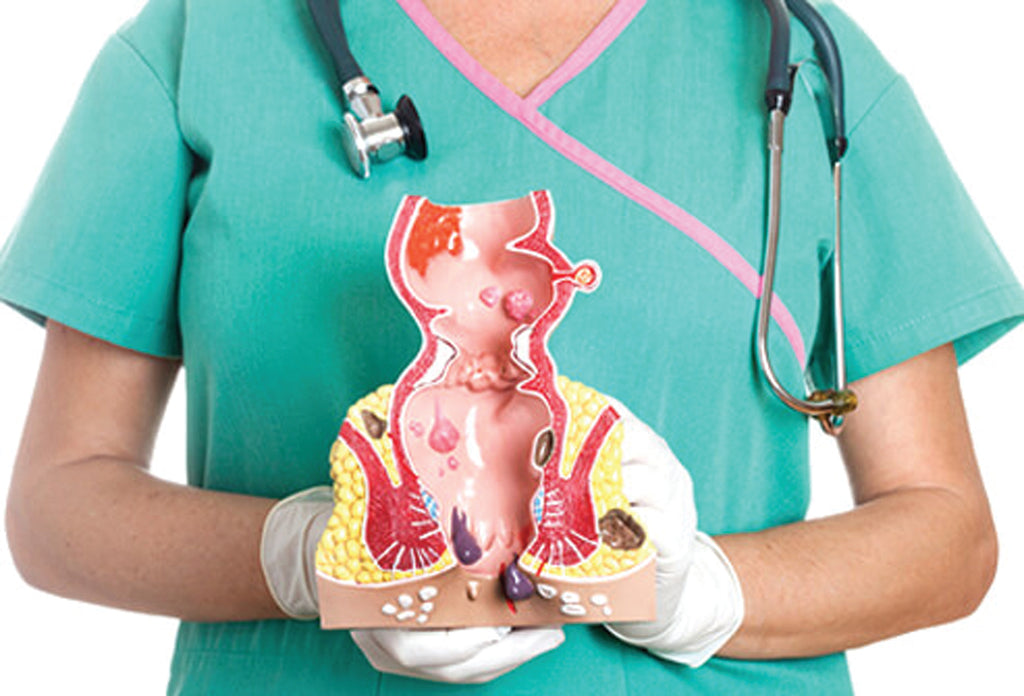Internal hemorrhoids are generally easy to deal with, but prolapsed internal hemorrhoids can be a real bother. Most internal hemorrhoids do not show any symptoms at all. As internal hemorrhoids progress through the different grades, bothersome symptoms start to emerge when they become prolapsed. Prolapsed internal hemorrhoids are hemorrhoids that protrude out of the anus. They don’t automatically retract back inside and can’t be pushed in manually. Let’s take a closer look at prolapsed internal hemorrhoids, their causes, and how to treat them.
What Are Prolapsed Hemorrhoids?Internal hemorrhoids are a common condition that aren’t often associated with symptoms. When internal hemorrhoids protrude outside of the anus, they are called prolapsed hemorrhoids. Many patients who end up with prolapsed hemorrhoids feel they are a cause for concern. It can be unnerving when a hemorrhoid protrudes out of the anus and cannot be manually pushed back inside. But, prolapsed hemorrhoids are rarely a cause for concern.
Prolapsed hemorrhoids are not painful, but they can be a major source of discomfort. They are broken down into four grades. They are as follows:
- Grade I internal hemorrhoids do not protrude outside of the anus. The most common symptom is painless bleeding, but you may not even experience that.
- Grade II internal hemorrhoids prolapse out of the anal canal but retract back inside on their own. They are most commonly felt during a bowel movement.
- Grade III internal hemorrhoids protrude out of the anal canal during exertion and do not retract on their own. But, they can be pushed back inside the anal canal manually.
- Grade IV internal hemorrhoids prolapse out of the anal canal and cannot be pushed back manually. These are the most bothersome prolapsed internal hemorrhoids. They stay outside of the rectum and usually require some form of medical treatment.
The most common symptoms of prolapsed hemorrhoids are:
- Painless bleeding. This is most commonly seen during or after bowel movements or other forms of exertion. You may notice blood in the stool, toilet bowl, or on the toilet paper after wiping.
- You may still feel like your have to make a bowel movement.
- Some pain may occur in cases where a prolapsed hemorrhoid becomes thrombosed.
- A visible lump outside of the rectum. This can become irritating and cause discomfort, especially when sitting.
Cause and Treatment
Hemorrhoids are a common condition that most patients face at one point in their life. Prolapsed hemorrhoids are caused by the progression of internal hemorrhoids. The most common causes of any hemorrhoid are:
- Pregnancy
- Obesity
- Diet
- Chronic constipation
- Chronic diarrhea
- Lack of fiber
- Improper hygiene
- Straining during bowel movements
- Sitting or standing for too long
- Strain from exertion
For most prolapsed hemorrhoids, self-care is enough to heal them. A simple change in your lifestyle or diet can help heal your hemorrhoids and prevent new hemorrhoids from occurring. In some cases, prolapsed hemorrhoids reduce on their own with time. Self-care options include:
- Homemade sitz baths
- Ice packs
- Over-the-counter hemorrhoid creams and ointments
- Witch hazel wipes
- Anti-inflammatory medications
- Increase in dietary fiber
- Increase in water consumption
- Better hygiene practices
- Better bowel habits
In some cases, medical treatment is required for grade IV prolapsed hemorrhoids. Most doctors are conservative and will try prescription suppositories, creams, and ointments first. There are also non-invasive procedures that can be performed in your doctor’s office without anesthesia. The most common treatment is the rubber band ligation that places a small, tight band around the base of the hemorrhoid to cut off the blood supply.
In severe case, surgery may be required. The surgical treatment for prolapsed hemorrhoids will be performed at a hospital or medical surgical facility under anesthesia. The most common surgical treatment for prolapsed hemorrhoids is a hemorrhoidopexy. This is also called stapling. During a hemorrhoidopexy, medical-grade staples are used to attach the prolapsed hemorrhoid in place on the rectal wall. This cuts off the blood flow of the hemorrhoid and shrinks the tissue back into place.
Prolapsed hemorrhoids can be a real bother. In some cases, they might even be frightening. The good news is that they are rarely dangerous and can be effectively treated with a number of different options. If you have a prolapsed hemorrhoid that is bothersome and hasn’t resolved with at-home treatments, talk to your medical provider about different options to fix the problem.

